Derryl Yeager
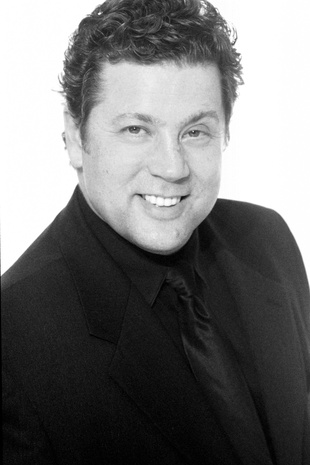
When was the first time you began to think of dance as a career?
I started when I was in high school (sixteen years old) in Amarillo, Texas. I got into a musical, Camelot, and did not win the part I wanted, but during that musical I wound up doing a lot of dance numbers. The director of the show, Neil Hess, had his own dance studio, and he told me that it seemed I had an aptitude for movement. I remember thinking “Hey, I can do that.” That’s where I discovered my ability to move.
After that, Hess invited me to his studio, the Neil Hess School of Dance in Amarillo. I walked in there and I saw twenty-eight girls and not one guy. I thought, “Man! These are good odds! I like this.” I started taking classes and found it was one of the most difficult things I’ve ever tried. I had been in all kinds of sports. I did hockey, baseball, football—I played lots of sports in my younger years through junior high and I excelled in each of those. But there was something about dance that struck me as hard and difficult. Not just hard and difficult from a physical point of view, but from a performance point of view.
It was the challenge of it that attracted me—not only of doing something very physical, but also of doing something in a performance: expressing yourself through movement as in an abstract ballet or by portraying a character. I found the physical and artistic challenge was very, very appealing to me. So I just started taking classes there at Neil’s studio.
Because I had done a lot of sports and things like that, I was used to picking things up fairly quickly. Within a year of taking dance classes there I got a scholarship to the San Francisco School of Ballet. I went there for a summer session.
On my way to San Francisco, we stopped in Salt Lake City. I had a friend, Matt, who was also involved in dance, and who introduced me to the Church. I was a Southern Baptist at the time, but I was investigating the Church. So when he and I stopped in Salt Lake, we watched some rehearsals of Ballet West. I realized while I was there that I didn’t want to go to San Francisco. There were some great dancers there, but there was just something different about Ballet West.
One of the things that was really different about it was that all of the guys in the Ballet West company were straight (which was really unusual then and still unusual now). But that was something that really appealed to me, that there were a bunch of guys in this dance company and it was okay to be a dancer. I met Bill Christensen, the co-founder and first artistic director of Ballet West. I decided then I would go back to the University of Utah, get in the program there, and then one day, hopefully, start working with Ballet West.
So I came back that fall. Back in those days if there was a guy who was willing to put on tights and dance (it was pretty lean pickings at that time), Ballet West said, “Come on over!” So I was in their Nutcracker production immediately. I just played some of the simple characters, but I got to work with the company.
Very soon after that, I began to work with the company as an apprentice. I started with Ballet West as an apprentice, and in the six years that I was there I worked my way up to be a core member, a soloist, and then eventually a principal dancer in the company. I got to work with Bill Christensen; Bene Arnold, the Ballet Mistress there at that time; and Bruce Marks.
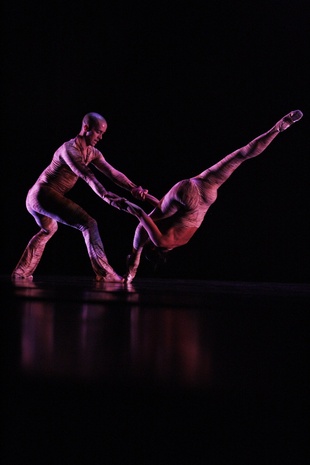
What was your family’s reaction to your decision to become a Mormon?
My father passed away just before I was sixteen, which kind of led me on my spiritual search at that time. Something was missing. I was a very religious kid all those years; I went to church all the time and I enjoyed the fellowship of the kids there, but something was very different and wrong at that time. That’s when I ran into my friend Matt, a fellow dancer, who had gone through the missionary discussions with the Church. (Neil Hess was LDS, too.) Matt wanted to join the Church but couldn’t because his parents wouldn’t let him. During this time, he and I would just sit and talk. He would tell me stuff about what the Church believed, and it all made sense. All the things he said were practical and made sense to me. I wondered, “Why haven’t I heard about this before?”
When I asked if I could be baptized, my mom said yes, which was kind of unusual—for that situation, especially, down in the Bible Belt. So I actually got to join the Church before Matt did.
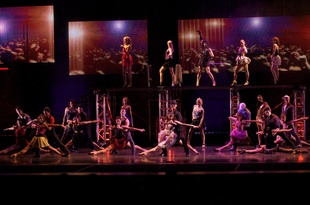
From Ballet West, how did your career expand to include stage, screen, and television?
After six years at Ballet West and as the principal dancer, I realized that I had achieved my goal. I got to the highest level that I could get to, so I asked, “What’s next?”
I started doing choreography when I was at the University of Utah, and Ballet West gave me a couple of opportunities while I was there. I also completed my bachelor’s and master’s degrees in Performing Arts and Choreography while at Ballet West, giving me something to fall back on if I didn’t make it as a dancer.
I actually taught at BYU for a year and a half. I was a faculty member there even though I was still in my early twenties. I realized that was not what I really wanted to do. The show A Chorus Line had come here to the Capitol Theatre in Salt Lake City. I knew it was coming. I also knew they always had auditions when they came. Since I had started out in musicals, I thought about moving into that area. I worked really hard at developing my tap, because I knew tap was involved. I worked on jazz and took jazz classes. I worked on my voice to get my voice back in shape because I hadn’t sung for quite a few years. I worked on my acting. I did all these different things to get myself ready for a possible career in musical theater.
There was an audition that was going to happen there at Salt Lake City. I thought the audition was going to be on Thursday, so I prepared myself for three or four months to get ready for this audition. On Wednesday night I was at home, watching the television. A news piece came on about the auditions that they had for A Chorus Line that day. I had missed the auditions. For some reason, I had the wrong day. The wrong information. I had missed the whole dang audition.
I was devastated and just beside myself. I got the casting director’s phone number from a friend, and I just called him, out of the blue. I said, “Listen, my name’s Derryl Yeager. I am here in Utah. I am a principal dancer with Ballet West. I am very interested in auditioning for your show. I am coming to New York Thanksgiving weekend. Are there any auditions happening then?”
He said, “Well, gee. Thanksgiving is bad. Everybody in New York leaves, so we’re not having auditions. But when you get to the city, bring your picture and resume by the Shubert Theater and we’ll see.”
I went to New York that Thanksgiving weekend and had two successful auditions for two different things with some of the top people in my field. I came home from New York with a contract for the A Chorus Line International Company in my hand. The next morning, I gave my two weeks’ notice to BYU. That was literally “The Weekend that Changed My Life” in terms of where my career would go. I joined that company and did the show for two years. The last time we did the show it was in the Wilshire Theater in Los Angeles. At that time, I decided I wanted to settle down in L.A. It was a little more of a family-oriented, Western lifestyle than it was in New York. I just didn’t think that New York was where I wanted to take my family at that point in time. So I settled down in L.A. Michael Bennett, the guy who created A Chorus Line, asked me to do Dreamgirls, so I did that.
Then Tom Reed, whom I had met in New York, called me about assisting with the auditioning and auditioning myself for the L.A. company for Cats. I went through three weeks of auditions. We saw three thousand people. The most difficult thing was to be an auditioner and then to be an auditionee. That was one of the most difficult auditions I had ever had. You get a familiarity with everyone behind the table and a camaraderie, but then you have to go in front of them. You know what goes on back there. Then I have to go in front of the table and be the dancer and the actor who is trying to get a job. I would never recommend that for anybody. It really puts you between a rock and a hard place. You have to really, really be good to get past that familiarity that they have with you. But I did wind up being in the show, so it was good.
I did Cats for two years in Los Angeles. While I was there I did lots of other things like Staying Alive and the television work filling in the cracks between shows.
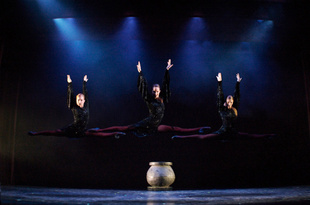
What makes choreography different from performing?
Choreography is telling people what to do. It’s actually having a vision of what movement you want to see with a particular piece of music. For me, it starts with a particular piece of music. I envision dance to this piece of music much the same way that sculptors see a block of wood or marble and they envision what they are going to create out of that.
How did the Odyssey Dance Company start?
After doing some gigs in Los Angeles, I began to teach at Center Stage Studio in Orem, Utah. As I started teaching here, I saw a huge pool of talent in Utah—a huge number of dancers, but they didn’t want to move to New York or L.A.
Having been through that experience myself, and knowing how hard and difficult it was for anybody to survive spiritually through that process, I felt it was important to create a company that would allow them to have a professional experience without having to move to New York or L.A. That’s where the seeds of what became Odyssey Dance Company began.
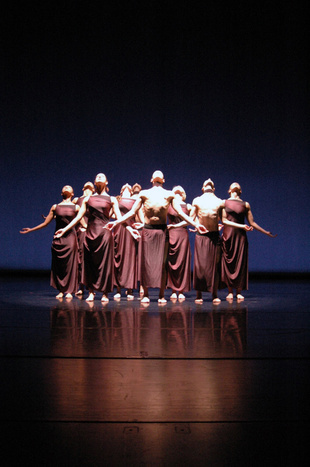
Where did Thriller come from?
When I started the Odyssey Dance Company, I knew that I needed to have something that would be my Nutcracker—something that would provide the income we needed to do everything else we wanted to do.
Originally I looked at the possibilities and thought, “I don’t want to do Nutcracker or something around Christmas, but nobody’s doing anything around Halloween.” I saw an opening there. I was originally thinking of doing a full-length Dracula or some such show, but at that time I didn’t have any money, and there’s no way I could produce a big show like that without any money. One of the board members suggested that we do some vignettes of different characters. I thought about it, and at first it didn’t interest me very much, but as I continued to think about it, I realized there are a lot of horror characters, so maybe there was something to this idea.
The very first year, we threw together this show called Thriller. Now, the Michael Jackson music video “Thriller” was just the umbrella for this Halloween show. We used it as our opening number where we have a bunch of dancing zombies. But the rest of the show has nothing to do with “Thriller” or Michael Jackson; the show is just about Halloween.
So we put together the show. I had four performances set up at Kingsbury Hall at the University of Utah campus. We put out as much publicity as we could. We didn’t have any money at the time. The guy who ran Kingsbury Hall called me about a week before we opened. He said, “You know what? You’ve only sold about fifty tickets to this show. Maybe you should cancel.” I said, “Yeah, you are probably right from a pure business point of view. But I’ve been in the studio working with these dancers. We’ve got something that is different, something that might get some traction. Maybe if we do four shows, word of mouth will get going and people will come out. And if I am going to go down in flames, I am going to go down in flames. I think I need to give this show a shot.”
So we did those first four performances. We ended up with decent houses. You know, in Kingsbury Hall, having six hundred people feels like there’s nobody there. But for me, that was pretty good, for the first set of shows.
It grew from there. We now do over forty performances over the entire state with two companies. Two whole companies and over forty performances, and almost all of them are sold out. It does provide the income for the rest of the year!
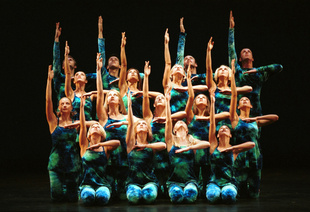
Thriller is not your typical “artsy” performance. What is it about Derryl Yeager that would make you even dream up such a show?
The show has tons and tons of humor. The secret to the show is that it is very tongue-in-cheek. Almost every number has scary things in it, but it is the humor of the show that people really, really love. It is so fun to watch the audience laugh at these pieces that we’ve created. It is an amazing thing. People find a release in this show because they laugh so hard. I think that’s what’s kind of cool about it.
You asked, though, really about where this show came from. Well, I have this sick sense of humor. When I started choreographing, for some reason I was always able to inject some humor into what I was doing. It is a very unusual thing to be at a dance performance and be laughing. Most dancers are “artistes.” They’re working out their issues on stage. It’s all pounding the chest, “Oh, woe is me!” and, “Oh, how bad our life is!” Contrastingly, this show is so lighthearted, fun, ridiculous, and truly absurd (in many cases), but very entertaining. That’s what the basis of the show is and why people keep coming back to it year after year. It is so funny, so fun, and a great release. And a great way to celebrate Halloween!
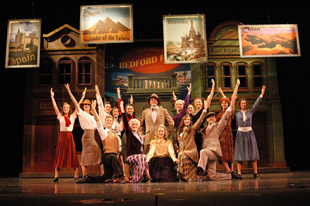
What role does being a Latter-day Saint play in your creativity? Do you see yourself as a dancer who happens to be a Latter-day Saint or a Latter-day Saint who happens to be a dancer?
I’ve often seen myself as a dancer who sees himself as a Latter-day Saint. But, as I look back at it in retrospect…
I was in A Chorus Line, and there’s a lot of foul language in that show; however, there are a lot of redeeming things in the show as well. For a lot of people out there in the “real” world, it really touches them in a very different and unique way. There are some who, from the LDS side, would say, “How could you ever be in that show?” with all the foul language, the gay themes, and this or that in the show.
I’ve never really thought of myself as someone who specifically does his art for Mormons. If I were doing my stuff just for Mormons, then the art would be skewed in some way. Now, we had lots of discussions about this at the Mormon Arts Festival some years ago. Such questions as, “What is the Place of Art in the World?” I really came to the conclusion that the Church is there to help us reach a certain specific goal: to receive exaltation and be able to become who we are destined to become after passing the tests in this life. Most really good art has the same goal: to really uplift a person, to get a person beyond himself and to see himself in a larger context—trying to better himself and trying to become a better human being. The goals of art and Mormonism are very similar, but they just take different paths to the same goal.
Where the world out there wouldn’t accept the missionary discussions, they might accept a piece about It’s a Wonderful Life that is filled with what I see as gospel principles—redeeming factors that help them become better people. I look at my art form as something that is really meant to help everyone. My LDS-ness does permeate everything I do (some may disagree!). I do have an “editor” within me that will not allow certain things to happen within the things I do as a choreographer and as a performer. But I look at the art piece as a whole and ask, “What is it doing for the audience?” “How does it transfer it to them?” “How is it transporting them to another level?” Basically, “How is it edifying them?”
I don’t see myself as doing “Mormon” art. I feel I am just doing art—art that can be accepted in any context, art that still points people towards the good. As the scripture says, “anything of good report or praiseworthy” that leads you in the right direction is of God.
Even Thriller, which is a lot of sick humor based on evil characters. It does make fun of those characters, but it also edifies people because it makes them laugh. It helps them get beyond the foreclosures they are dealing with in life. It’s very cathartic. Humor is something that is very hard to do. You look at all the comedies that come out—how many are really funny? They are horrible. Most of the humor in movies is really horrible. Nobody knows how to do it anymore. I feel that in many ways I have a gift in that regard. I am proud to be using that talent to instill humor in everything I do. Now, not everything I do is humorous; I have my “artsy fartsy” pieces, too.
But I know for a fact that the real heart of Thriller is its humor. That’s what people respond to. To sit with a whole house full of people and laugh out loud is a very cathartic and unique experience. It can only be experienced in a live audience. You can’t just be sitting in front of the television and laugh. That’s what the laugh track is for. A real audience laughing together is a wonderfully cathartic experience.
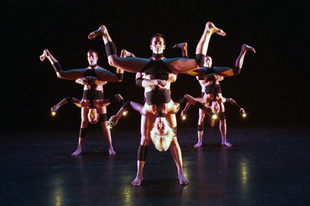
Doesn’t this make dance and live theater more precious?
Yes, this is why I really try to teach my dancers to appreciate it. Dancers are very unique athletes. There is something about the movement of the physical body that captures you. It never ceases to amaze me that when you start to dance, people stop to watch you.
We worked for Coca-Cola during the Olympics in Salt Lake City. We put together a couple of little sets, a couple of fifteen-minute shows, at their pavilion in Park City. We would turn the music on and start dancing and do the numbers.
People would just stop. They can’t not watch. The comment that means the most to me is when someone says, “You know, I don’t like dance. But that was cool. I like that.” So for some burly truck driver to stop and say that…. We’ve created a whole new market for dance. We’ve shared beyond the normal confines of the arts community.
I am the poster child of “Everything is Possible!”—that you can be a Latter-day Saint and a dancer.
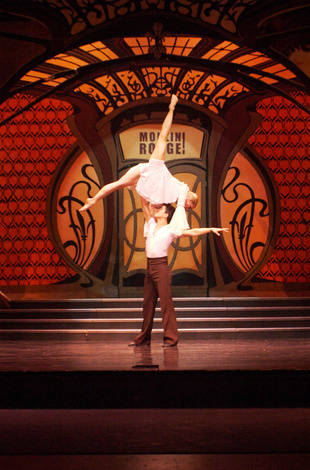
Why do you think Utah is generating such a reputation in the creative arts?
I think the Spirit is moving. Several times I’ve looked at stuff coming out of Hollywood and I go, “They’ve officially run out of ideas.” I think part of it is they don’t have anything to say. Because they don’t have anything to say, there is nothing that drives them. Therefore their creativity is just not there.
All the remakes being done right now, and horribly done compared to the originals, are very interesting. I go to New York and I see a lot of dance companies. Their work is just crap. I mean, just drivel. It’s awful, compared to the stuff we are doing here. As a company, we are on the verge of exploding to a whole new level, a level that is really exciting but also very frightening at the same time. I sit back and say, “Lord, it is in your hands. Here we go.” I am ready to do it. I am fully aware of all the pitfalls ahead, but if this is what he wants us to do and where he wants us to go, let’s do it.
My patriarchal blessing is very interesting. It says that I will become a “torchbearer.” I’ve wondered about that phrase my whole life. Now I can kind of see where it can go. There are all these kids coming out of Utah, most of whom are LDS. When we go and perform in Europe, they love our company there. My agent over there says every time, “There is something so different about your group. I don’t know what it is.” About eighty percent of my company is from Utah, and about seventy percent are good LDS kids. It wasn’t intended that way—I don’t put them through a temple recommend interview when I bring people into the company. But it does have a lot to do with their goodness as people, as human beings. I’ve had a lot of really talented dancers who I didn’t bring into the company just because they are not good people. I’m not interested in that—I am too old to deal with that.
A challenge we face as Mormon artists is how we see ourselves in the Lord’s plan. I honestly believe that we, in many ways, are the front line of the gospel. We are the front line that paves the way for the missionaries to come in. We are the ones who can open the doors to spiritual thought and context that will further the Lord’s work and that can lift others from their level to a higher plane.
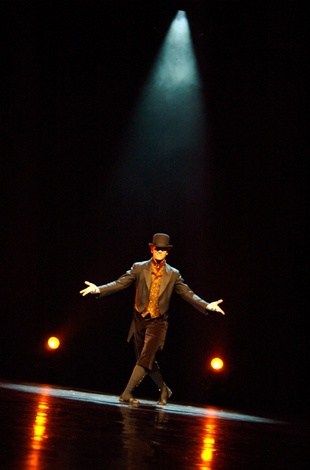
You mentioned that remaining faithful was a challenge during your years in professional theatre and television. What did you do to remain spiritually strong?
Whenever you have a group of people, there will be events, parties, and get-togethers where things will get out of control. I could sense that moment approaching, and I would leave. For many events, I didn’t even go. This was very difficult to do. Many of these people were fun to be around.
I thus became a hermit. I just went back to my room and read. I’d work on my craft or I’d be teaching. (You have to keep training. Otherwise, when the gig is over, you are no better off than when you started the show.) I always continue to develop my skills to be more capable.
Naturally, I would go to Church as I could and I’d study the scriptures. Most importantly, I was happily married to my faithful spouse, Cheryl.
What do you see as the challenge for the Mormon artist?
The Mormon artist is stuck between two worlds. You can’t play to both of them, can you? The expectations Mormons have of their artists is very different from that of the mainstream. When I perform, I don’t see myself playing to a Mormon audience.
I mean, Thriller is the antithesis of “Mormon art.” So is squeaky clean what needs to happen for it to be “Mormon” art?
I take my call from Elder M. Russell Ballard’s talk at the Tuacahn Mormon Arts Festival in April of 1995 when he said, “Few earthly things bring joy more fully to the world than the arts…take that inspiration from heaven and…create dance and art…all of which would declare that…the fullness of the everlasting gospel is once again upon the Earth.” ❧
